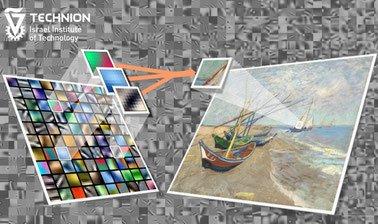MOOC List is learner-supported. When you buy through links on our site, we may earn an affiliate commission.

MOOC List is learner-supported. When you buy through links on our site, we may earn an affiliate commission.
Models play a central role in practically every task in signal and image processing. Sparse representation theory puts forward an emerging, highly effective, and universal such model. Its core idea is the description of the data as a linear combination of few building blocks – atoms – taken from a pre-defined dictionary of such fundamental elements.
In this course, you will learn how to use sparse representations in series of image processing tasks. We will cover applications such as denoising, deblurring, inpainting, image separation, compression, super-resolution, and more. A key feature in migrating from the theoretical model to its practical deployment is the adaptation of the dictionary to the signal. This topic, known as "dictionary learning" will be presented, along with ways to use the trained dictionaries in the above mentioned applications.
This course is part of the Sparse Representations in Signal and Image Processing Professional Certificate program.
What you'll learn
- The importance of models in data processing, and the universality of sparse representation modeling.
- Dictionary learning algorithms and their role in applications.
- How to deploy sparse representations to signal and image processing tasks.
Syllabus
This program is composed from two separate parts:
1. Part 1: Sparse Representations in Signal and Image Processing: Fundamentals.
2. Part 2: Sparse Representations in Image Processing: From Theory to Practice.
While we recommend taking both courses, each of them can be taken independently of the other. The duration of each course is five weeks, and each part includes: (i) knowledge-check questions and discussions, (ii) series of quizzes, and (iii) Matlab programming projects. Each course will be graded separately, using the average grades of the questions/discussions [K] quizzes [Q], and projects [P], by Final-Grade = 0.1K + 0.5Q + 0.4P.
The following includes more details of the topics we will cover in the second course:
- Overview of the field and this course.
- Sparseland theoretic and algorithmic background.
- Introduction to image priors and their evolution in image processing.
- In-depth view of the Sparseland model including a geometry perspective and processing of Sparseland' signals.
- Image deblurring and Iterative Shrinkage Thresholding Algorithm (ISTA).
- Sparesland from an estimation point of view, including a crash-course of estimation theory.
- The quest for a dictionary: choosing versus learning a dictionary, including basic dictionary learning algorithms: MOD and KSVD.
- Challenges in dictionary learning and advanced methods, including the double-sparsity, unitary and signature dictionaries.
- The image denoising problem and ways to solve it, including global and patch-based Sparseland methods.
- Crash course on SURE estimator for parameter tuning.
- The tasks of image separation and inpainting, including Morphological Component Analysis (MCA) and global versus patch-based treatment.
- The single image super-resolution problem and ways to solve it using Sparseland.
- Course summary and future research directions of the field.
MOOC List is learner-supported. When you buy through links on our site, we may earn an affiliate commission.
MOOC List is learner-supported. When you buy through links on our site, we may earn an affiliate commission.
